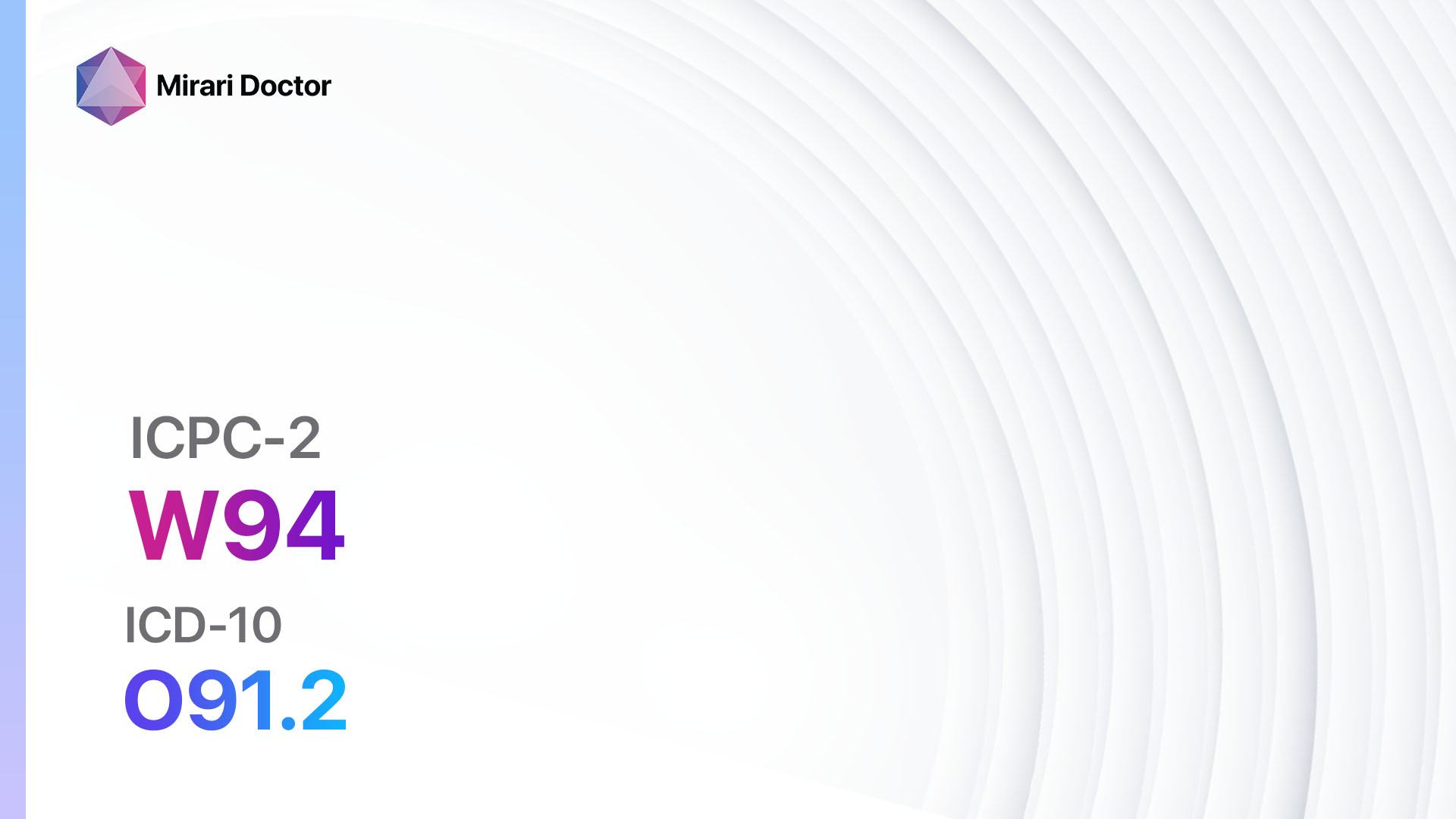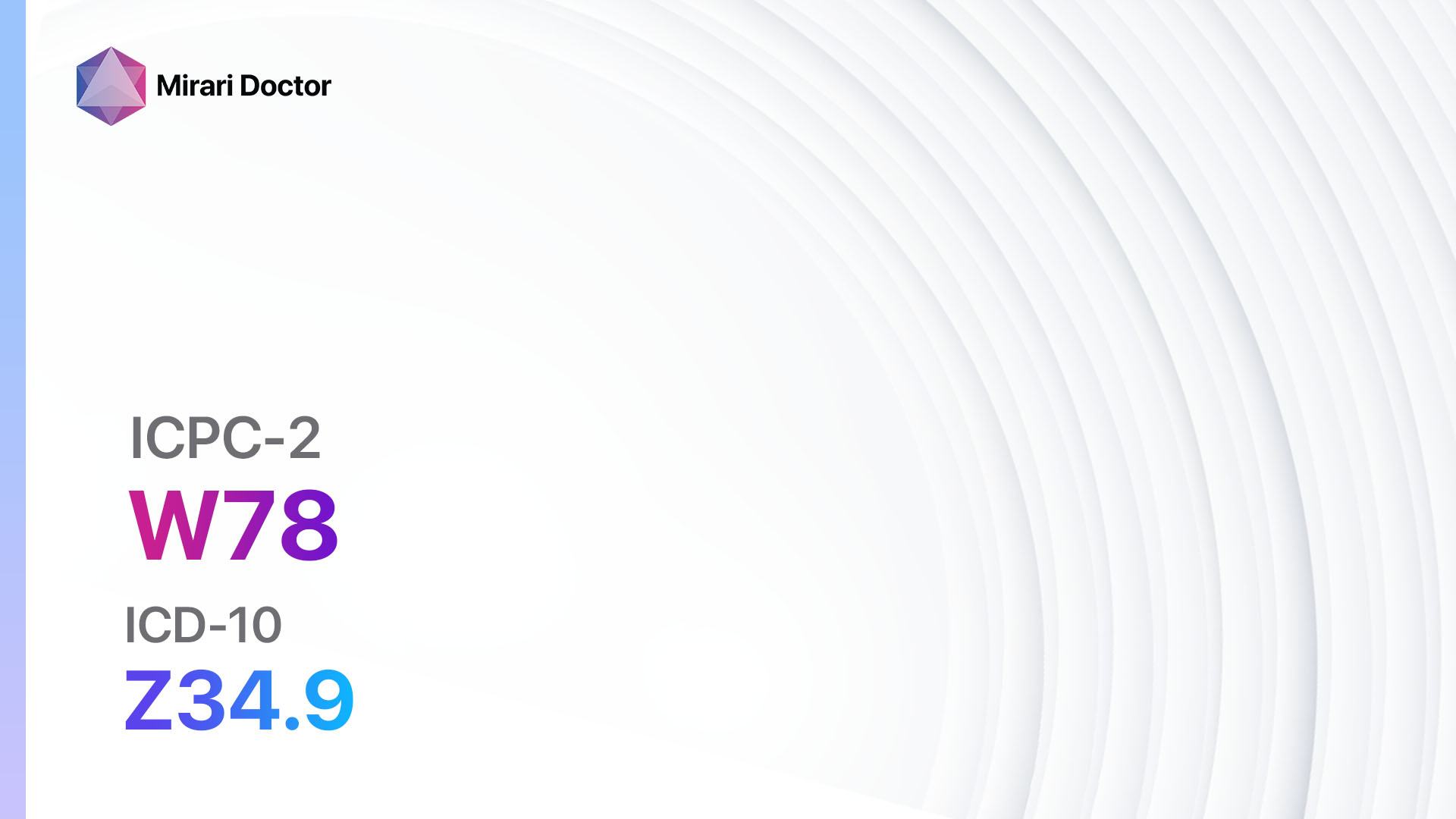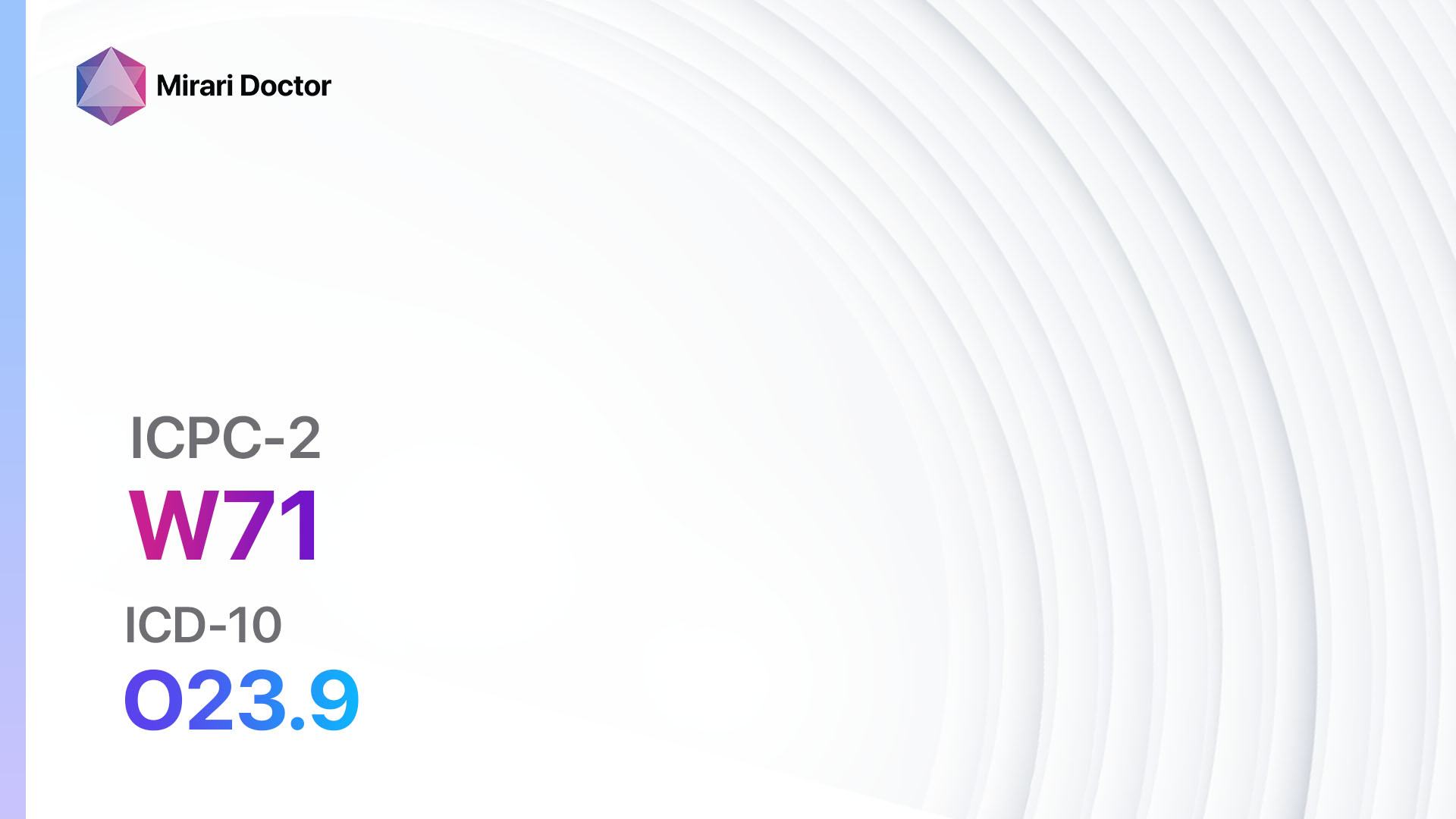
Introduction
Post-partum bleeding refers to excessive bleeding that occurs after childbirth. It is a significant concern as it can lead to severe complications and even death if not promptly addressed[1]. The aim of this guide is to provide healthcare professionals with a comprehensive overview of the diagnostic steps, possible interventions, and follow-up care for post-partum bleeding.
Codes
Symptoms
- Heavy or prolonged vaginal bleeding
- Passing large blood clots
- Fatigue or weakness
- Dizziness or lightheadedness
- Rapid heart rate
- Low blood pressure[3]
Causes
- Uterine atony: Failure of the uterus to contract after childbirth
- Retained placenta or placental fragments
- Uterine rupture or inversion
- Coagulation disorders
- Trauma during childbirth[4]
Diagnostic Steps
Medical History
- Gather information about the patient’s risk factors, such as previous history of post-partum bleeding, multiple pregnancies, or cesarean section.
- Inquire about any medical conditions that may contribute to bleeding, such as coagulation disorders or uterine abnormalities.
- Ask about the duration and severity of bleeding, presence of pain, and passage of blood clots[5].
Physical Examination
- Perform a thorough abdominal examination to assess the size and position of the uterus.
- Check vital signs, including blood pressure, heart rate, and temperature.
- Conduct a speculum examination to evaluate the cervix and vaginal bleeding.
- Perform a bimanual examination to assess the size and consistency of the uterus[6].
Laboratory Tests
- Complete blood count (CBC) to evaluate hemoglobin and hematocrit levels.
- Coagulation profile, including prothrombin time (PT), activated partial thromboplastin time (aPTT), and fibrinogen levels.
- Blood type and Rh factor to determine the need for blood transfusion.
- Group and screen for cross-matching in case of emergency blood transfusion[7].
Diagnostic Imaging
- Transvaginal ultrasound to assess the uterus, placenta, and presence of any retained products of conception.
- Doppler ultrasound to evaluate blood flow in the uterus and surrounding vessels.
- Magnetic resonance imaging (MRI) in complex cases to assess uterine abnormalities or suspected uterine rupture[8].
Other Tests
- Endometrial biopsy to rule out endometrial pathology as a cause of bleeding.
- Coagulation studies, including factor assays and platelet function tests, in cases of suspected coagulation disorders.
- Hysteroscopy to visualize the uterine cavity and identify any abnormalities[9].
Follow-up and Patient Education
- Schedule regular follow-up appointments to monitor the patient’s recovery and ensure that bleeding has resolved.
- Educate the patient about signs and symptoms of excessive bleeding and when to seek immediate medical attention.
- Provide information on contraception options to prevent future pregnancies until the patient’s health has stabilized[10].
Possible Interventions
Traditional Interventions
Medications:
Top 5 drugs for Post-partum bleeding:
- Oxytocin:
- Cost: $10-$50 per vial.
- Contraindications: Hypersensitivity to oxytocin, fetal distress.
- Side effects: Nausea, vomiting, uterine hyperstimulation.
- Severe side effects: Uterine rupture, water intoxication.
- Drug interactions: Nonsteroidal anti-inflammatory drugs (NSAIDs), vasopressors.
- Warning: Administration should be closely monitored.
- Methylergonovine:
- Cost: $10-$30 per tablet.
- Contraindications: Hypertension, preeclampsia, coronary artery disease.
- Side effects: Nausea, vomiting, headache.
- Severe side effects: Hypertension, myocardial infarction.
- Drug interactions: Ergotamine, protease inhibitors.
- Warning: Caution should be exercised in patients with cardiovascular disease.
- Carboprost tromethamine:
- Cost: $50-$100 per ampule.
- Contraindications: Asthma, hepatic or renal impairment.
- Side effects: Nausea, vomiting, diarrhea.
- Severe side effects: Uterine rupture, anaphylaxis.
- Drug interactions: NSAIDs, oxytocin.
- Warning: Should be administered by healthcare professionals experienced in the management of post-partum hemorrhage.
- Tranexamic acid:
- Cost: $10-$30 per tablet.
- Contraindications: Active thromboembolic disease, acquired defective color vision.
- Side effects: Nausea, vomiting, diarrhea.
- Severe side effects: Thromboembolic events, seizures.
- Drug interactions: Anticoagulants, hormonal contraceptives.
- Warning: Should be used with caution in patients with a history of thromboembolic events.
- Misoprostol:
- Cost: $5-$20 per tablet.
- Contraindications: Hypersensitivity to misoprostol, fetal distress.
- Side effects: Abdominal pain, diarrhea, fever.
- Severe side effects: Uterine rupture, severe allergic reactions.
- Drug interactions: NSAIDs, oxytocin.
- Warning: Should be used with caution in patients with a history of uterine surgery.
Surgical Procedures:
- Uterine artery embolization: Minimally invasive procedure to block the blood supply to the uterus, reducing bleeding. Cost: $10,000-$20,000.
- Dilation and curettage (D&C): Surgical procedure to remove the uterine lining and any retained products of conception. Cost: $5,000-$10,000.
- Hysterectomy: Surgical removal of the uterus, usually reserved for severe cases of post-partum bleeding. Cost: $15,000-$30,000.
Alternative Interventions
- Acupuncture: May help stimulate uterine contractions and reduce bleeding. Cost: $60-$120 per session.
- Herbal remedies: Certain herbs, such as shepherd’s purse or yarrow, may have hemostatic properties. Cost: Varies depending on the specific herb and preparation.
- Homeopathic remedies: Arnica montana or Sabina may be used to reduce bleeding and promote healing. Cost: Varies depending on the specific remedy and potency.
- Transfusion of autologous blood: Blood collected from the patient during pregnancy can be transfused back if needed. Cost: Varies depending on the blood banking facility and transfusion requirements.
- Intrauterine balloon tamponade: Placement of a balloon in the uterus to apply pressure and control bleeding. Cost: $500-$1,000.
Lifestyle Interventions
- Bed rest: Limiting physical activity and staying in bed can help reduce bleeding. Cost: None.
- Hydration: Drinking plenty of fluids can help maintain blood volume and prevent dehydration. Cost: None.
- Iron supplementation: Taking iron supplements can help replenish iron stores lost during bleeding. Cost: $10-$20 per month.
- Healthy diet: Consuming a balanced diet rich in iron and other nutrients can support recovery. Cost: Varies depending on food choices.
- Stress reduction: Engaging in relaxation techniques, such as meditation or yoga, can help reduce stress and promote healing. Cost: Varies depending on the chosen method.
It is important to note that the cost ranges provided are approximate and may vary depending on the location and availability of the interventions. Healthcare professionals should consider individual patient factors and preferences when selecting interventions for post-partum bleeding.
Mirari Cold Plasma Alternative Intervention
Understanding Mirari Cold Plasma
- Safe and Non-Invasive Treatment: Mirari Cold Plasma is a safe and non-invasive treatment option for various skin conditions. It does not require incisions, minimizing the risk of scarring, bleeding, or tissue damage.
- Efficient Extraction of Foreign Bodies: Mirari Cold Plasma facilitates the removal of foreign bodies from the skin by degrading and dissociating organic matter, allowing easier access and extraction.
- Pain Reduction and Comfort: Mirari Cold Plasma has a local analgesic effect, providing pain relief during the treatment, making it more comfortable for the patient.
- Reduced Risk of Infection: Mirari Cold Plasma has antimicrobial properties, effectively killing bacteria and reducing the risk of infection.
- Accelerated Healing and Minimal Scarring: Mirari Cold Plasma stimulates wound healing and tissue regeneration, reducing healing time and minimizing the formation of scars.
Mirari Cold Plasma Prescription
Video instructions for using Mirari Cold Plasma Device – W17 Postmenopausal bleeding (ICD-10:N95.0)
| Mild | Moderate | Severe |
| Mode setting: 2 (Wound Healing) Location: 2 (Prostate & Uterus) Morning: 15 minutes, Evening: 15 minutes |
Mode setting: 2 (Wound Healing) Location: 2 (Prostate & Uterus) Morning: 30 minutes, Lunch: 30 minutes, Evening: 30 minutes |
Mode setting: 2 (Wound Healing) Location: 2 (Prostate & Uterus) Morning: 30 minutes, Lunch: 30 minutes, Evening: 30 minutes |
| Mode setting: 7 (Immunotherapy) Location: 1 (Sacrum) Morning: 15 minutes, Evening: 15 minutes |
Mode setting: 7 (Immunotherapy) Location: 1 (Sacrum) Morning: 30 minutes, Lunch: 30 minutes, Evening: 30 minutes |
Mode setting: 7 (Immunotherapy) Location: 1 (Sacrum) Morning: 30 minutes, Lunch: 30 minutes, Evening: 30 minutes |
| Total Morning: 30 minutes approx. $5 USD, Evening: 30 minutes approx. $5 USD |
Total Morning: 60 minutes approx. $10 USD, Lunch: 60 minutes approx. $10 USD, Evening: 60 minutes approx. $10 USD, |
Total Morning: 60 minutes approx. $10 USD, Lunch: 60 minutes approx. $10 USD, Evening: 60 minutes approx. $10 USD, |
| Usual treatment for 7-60 days approx. $70 USD – $600 USD | Usual treatment for 6-8 weeks approx. $1,260 USD – $1,680 USD |
Usual treatment for 3-6 months approx. $2,700 USD – $5,400 USD
|
 |
|
Use the Mirari Cold Plasma device to treat Post-partum bleeding effectively.
WARNING: MIRARI COLD PLASMA IS DESIGNED FOR THE HUMAN BODY WITHOUT ANY ARTIFICIAL OR THIRD PARTY PRODUCTS. USE OF OTHER PRODUCTS IN COMBINATION WITH MIRARI COLD PLASMA MAY CAUSE UNPREDICTABLE EFFECTS, HARM OR INJURY. PLEASE CONSULT A MEDICAL PROFESSIONAL BEFORE COMBINING ANY OTHER PRODUCTS WITH USE OF MIRARI.
Step 1: Cleanse the Skin
- Start by cleaning the affected area of the skin with a gentle cleanser or mild soap and water. Gently pat the area dry with a clean towel.
Step 2: Prepare the Mirari Cold Plasma device
- Ensure that the Mirari Cold Plasma device is fully charged or has fresh batteries as per the manufacturer’s instructions. Make sure the device is clean and in good working condition.
- Switch on the Mirari device using the power button or by following the specific instructions provided with the device.
- Some Mirari devices may have adjustable settings for intensity or treatment duration. Follow the manufacturer’s instructions to select the appropriate settings based on your needs and the recommended guidelines.
Step 3: Apply the Device
- Place the Mirari device in direct contact with the affected area of the skin. Gently glide or hold the device over the skin surface, ensuring even coverage of the area experiencing.
- Slowly move the Mirari device in a circular motion or follow a specific pattern as indicated in the user manual. This helps ensure thorough treatment coverage.
Step 4: Monitor and Assess:
- Keep track of your progress and evaluate the effectiveness of the Mirari device in managing your Post-partum bleeding. If you have any concerns or notice any adverse reactions, consult with your health care professional.
Note
This guide is for informational purposes only and should not replace the advice of a medical professional. Always consult with your healthcare provider or a qualified medical professional for personal advice, diagnosis, or treatment. Do not solely rely on the information presented here for decisions about your health. Use of this information is at your own risk. The authors of this guide, nor any associated entities or platforms, are not responsible for any potential adverse effects or outcomes based on the content.
Mirari Cold Plasma System Disclaimer
- Purpose: The Mirari Cold Plasma System is a Class 2 medical device designed for use by trained healthcare professionals. It is registered for use in Thailand and Vietnam. It is not intended for use outside of these locations.
- Informational Use: The content and information provided with the device are for educational and informational purposes only. They are not a substitute for professional medical advice or care.
- Variable Outcomes: While the device is approved for specific uses, individual outcomes can differ. We do not assert or guarantee specific medical outcomes.
- Consultation: Prior to utilizing the device or making decisions based on its content, it is essential to consult with a Certified Mirari Tele-Therapist and your medical healthcare provider regarding specific protocols.
- Liability: By using this device, users are acknowledging and accepting all potential risks. Neither the manufacturer nor the distributor will be held accountable for any adverse reactions, injuries, or damages stemming from its use.
- Geographical Availability: This device has received approval for designated purposes by the Thai and Vietnam FDA. As of now, outside of Thailand and Vietnam, the Mirari Cold Plasma System is not available for purchase or use.
References
- Giordano R, et al. Antepartum Haemorrhage. J Prenat Med. 2010;4(1):12-16.
- World Health Organization. International Statistical Classification of Diseases and Related Health Problems (ICD-10). 2019.
- Cleveland Clinic. Postpartum Hemorrhage: Causes, Risks, Diagnosis & Treatment. 2022.
- Kidney Disease: Improving Global Outcomes (KDIGO) Glomerulonephritis Work Group. KDIGO Clinical Practice Guideline for Glomerulonephritis. Kidney Int Suppl. 2012;2:139-274.
- Chevalier RL. Congenital Anomalies of the Kidneys and Urinary Tract. NeoReviews. 2019;20(5):e280-e289.
- Morey AF, et al. Urotrauma: AUA guideline. Journal of Urology. 2014;192(2):327-335.
- Summerton DJ, et al. EAU guidelines on iatrogenic trauma. European Urology. 2012;62(4):628-639.
- Lange-Sperandio B, et al. Congenital Anomalies of the Kidney and Urinary Tract: A Continuum of Care. Seminars in Nephrology. 2023;43(5):551-563.
- Stonebrook E, et al. Congenital Anomalies of the Kidney and Urinary Tract: A Clinical Review. Pediatric Nephrology. 2020;35(5):753-761.
- American College of Obstetricians and Gynecologists. Prevention and Management of Postpartum Hemorrhage. ACOG Practice Bulletin No. 183. Obstet Gynecol. 2017;130(4):e168-e186.
Related articles
Made in USA




























